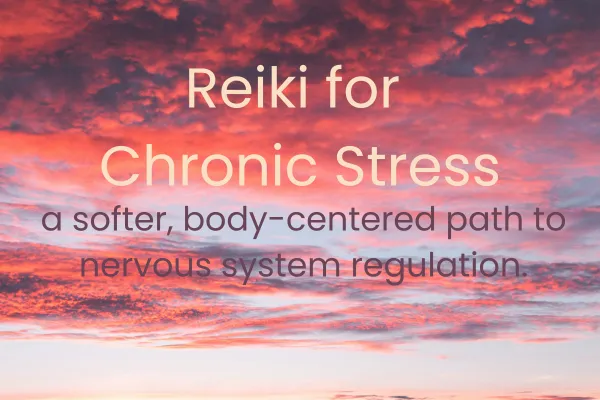
Reiki for Chronic Stress: A Trauma-Informed Approach to Nervous System Healing
When chronic stress becomes your baseline, your nervous system isn’t just overwhelmed—it’s overworked. Traditional stress relief methods might not bring lasting relief when the body remains in hyper-vigilant survival mode. That’s where trauma-informed Reiki offers a softer, body-centered path to nervous system regulation.
In this post, we’ll explore how Reiki supports stress reduction, why it’s especially beneficial in trauma-informed care, and how the healing energy helps restore balance—without forcing change.
How Reiki Supports Nervous System Healing
Reiki is a hands-on or hands-above practice designed to promote deep relaxation and energetic balance. While science doesn’t support a “universal life force” in rigorous terms, emerging studies on Reiki suggest it may significantly reduce anxiety and improve quality of life via gentle nervous system activation—especially in the parasympathetic (rest and digest) branch .
A meta-analysis of 13 studies involving over 800 participants found a significant reduction in anxiety (SMD = –0.82; P = 0.001) even after just 3–8 Reiki sessions . Another review found improved quality of life and decreased stress in chronic illness and healthy adults, especially with longer-duration sessions (≥ 60 minutes, around 8 sessions) .
Trauma-Informed Reiki: An Intentional, Respectful Approach
Trauma-informed Reiki prioritizes consent, safety, and personal boundaries. Rather than using structured protocols, the practitioner checks in—seeking permission at each stage, offering hand-on or hands-off options, and honoring the client’s pace and comfort level .
This approach is particularly healing for trauma survivors, who often experience somatic triggers or physical discomfort during touch-based or quiet therapies. Reiki can be offered over clothes, with minimal movement, in a dimly lit, calming environment.
What Clients May Experience During a Session
•Common sensations: warmth, tingling, or pulsations around energy centers or chakras
•Deep relaxation: many fall asleep or experience a meditative state
•Emotional release: tears, shifts in emotional tone, or even mood lifts shortly after the session.
•Visual experiences: Some report vivid colors or sensations tied to specific chakras
One client shared: “I felt ‘drunk’… deeply healing sleep… then woke up feeling lighter and refreshed.”
Integrating Reiki into Your Healing Routine
•Start small: Try 3 consecutive sessions, spaced 2 weeks apart, to notice subtle shifts
•Observe changes: Journaling—especially about stress levels, emotional clarity, or sleep—helps track impact
•Pair with other tools: Reiki integrates well with mindfulness, somatic practices, and Chakra-based embodiment work
How to Prepare and Follow Up
Before your session:
•Wear loose, comfortable clothes
•Come with an intention (e.g., stress relief, emotional clarity) to share with your practitioner
After the session:
•Rest, drink plenty of water, and avoid heavy meals or alcohol
•Track subtle shifts for 1–3 days (emotional release, fatigue, movement of energy)
Want to Start with Ease?
If you’re curious about Reiki for stress relief or are healing from trauma and in need of a safe approach, I’m here to support. I offer trauma-informed Reiki sessions designed to meet you where you are—with consent, care, and compassion.
✨ Book a reiki session | Explore my embodiment toolkit and Chakra self-assessment too.